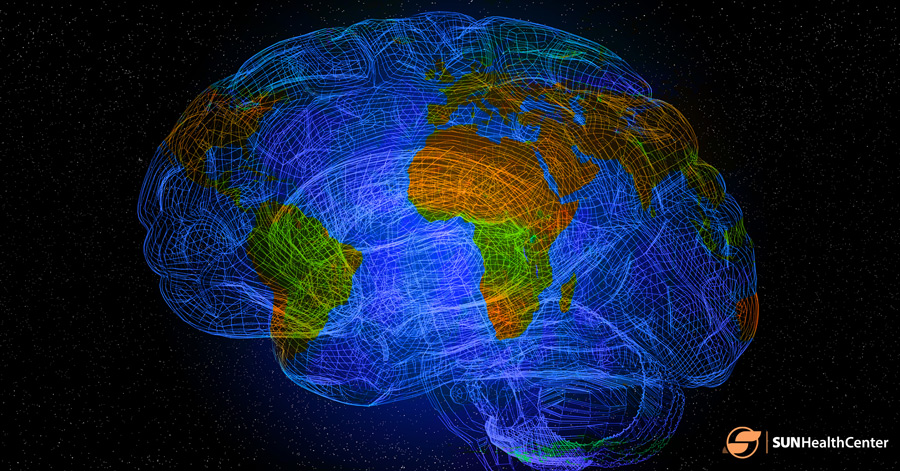

Mental health treatment is a relatively new addition to the medical field. While therapy and medication provide relief for many people, researchers are continuously looking for quicker, more effective methods. One of the latest developments comes in the form of neuro therapy — specifically, brain mapping. Here’s what you need to know about brain mapping, including how it may help you find relief from your mental health issues.
What Is Brain Mapping?
Brain mapping is essentially the process of recording your brain’s electrical activity. It uses a method known as quantitative electroencephalography, or qEEG, to measure brain waves that can then be analyzed. As your brain cells work together to power your thoughts and actions, they create electricity in the form of brainwaves. But not all brainwaves are equal. Different activities create different kinds of waves, meaning qEEG can reveal exactly how your brain is working. A scan can show signs of intense focus, distress and even a neurological disorder. Because brain maps are so revealing, researchers in the past few decades have worked to determine how they can be used to identify and diagnose disorders. The evidence has been overwhelming. Now, qEEG scans can detect physical, emotional and cognitive conditions with ease. For this reason, they’re now a common choice of treatment for mental health conditions.
Brain Mapping and Mental Health
Research has shown that brain mapping has the potential to be invaluable to the mental health field. For those with mental health disorders, their brains produce waves differently than an otherwise “normal” brain would. Using a qEEG scan, health experts can identify areas of the brain that aren’t operating as they should. Specific areas of the brain will show increased activity in the event of a serious mental health issue. For example, someone with a long history of depression will produce a different brain map than someone who has never had depression at all. Upon analysis of a person’s brain map, an expert will be able to determine which disorder they suffer from and how it affects their brain function. This technique can be used to identify a wide range of neurological conditions. Disorders such as anxiety depression and ADHD affect the brain at a chemical level, causing a change in electricity and brain waves. Unlike other treatment methods, brain mapping can reveal a condition through a simple scan. For patients in need of immediate relief, this can greatly speed up the process of combating a serious mental health disorder.
Brain Mapping in Action
Diagnosis isn’t the only use for brain mapping. Today’s professionals have also developed ways to use qEEG technology during treatment for mental health disorders. This is possible using a process known as neurofeedback. The neurofeedback method works to give patients the means to control their brainwaves. Rather than responding to subconscious waves, they develop conscious reactions to triggering stimuli. This type of brain “training” can help eliminate thought patterns that tend to exacerbate disorders like anxiety and depression. Such methods can make a big difference for those who find their disorders extremely debilitating. Instead of feeling trapped or constrained by their condition, they can work to develop ways to control it. In addition to this, brain mapping feedback can help patients determine the root cause of their disorders. Medical professionals can’t peer into an individual’s brain to see where the trouble starts. Brain maps provide greater insight into a person’s mind that may point to factors that could be worsening their condition. These scans may even indicate the best methods of supplemental treatment.
The Benefits of Brain Mapping
Treatment methods such as therapy and medication are the most common ways of treating mental health disorders. But as brain mapping has become more widely available to patients, its benefits have become clear. Compared to alternative treatments, qEEG scans are relatively quick-acting. Analysis of a single scan can provide medical professionals with a vast amount of information that would otherwise take weeks or months to gather. Some of these valuable details include the source of a disorder and the best way of treating it. It could take dozens of therapy sessions to determine the root source of a condition. Until then, the patient must continue to blindly manage the resulting symptoms. And when specific methods like medication are suggested, it takes an additional testing period to determine whether a prescription is the best fit. Since mapping identifies the brain’s specific neurological workings, it can also indicate the best form of treatment. This means patients have access to a targeted course of action that could bring them faster relief.
Measuring Brain Mapping Therapy
Conditions like depression are widespread in the United States, affecting nearly 10% of adults. Because mental health issues tend to affect everyone slightly differently, treatment isn’t one-size-fits-all. For this reason, they’re often addressed using multiple methods, such as using a combination of therapy and medication. As brain mapping for anxiety and other disorders becomes a more popular choice of treatment, its list of benefits has grown. But one of its greatest strengths comes from being a measurable way to assess mental health. Regular scans give patients the opportunity to track their progress against a disorder. With methods like therapy, progress can be relatively subjective. Brain mapping, on the other hand, leaves no room for emotional interpretation. With ongoing scanning, a person who has sought treatment will be able to see a measurable difference in their brain waves. Not only is this extremely rewarding, but it’s also a more reliable way to monitor the progress made in treating a disorder. Deciding to seek treatment for a mental health issue is a brave first step. At Sun Health Center, we’re ready to guide you through the next part of the process. Contact us today to find a treatment plan that works for you.
